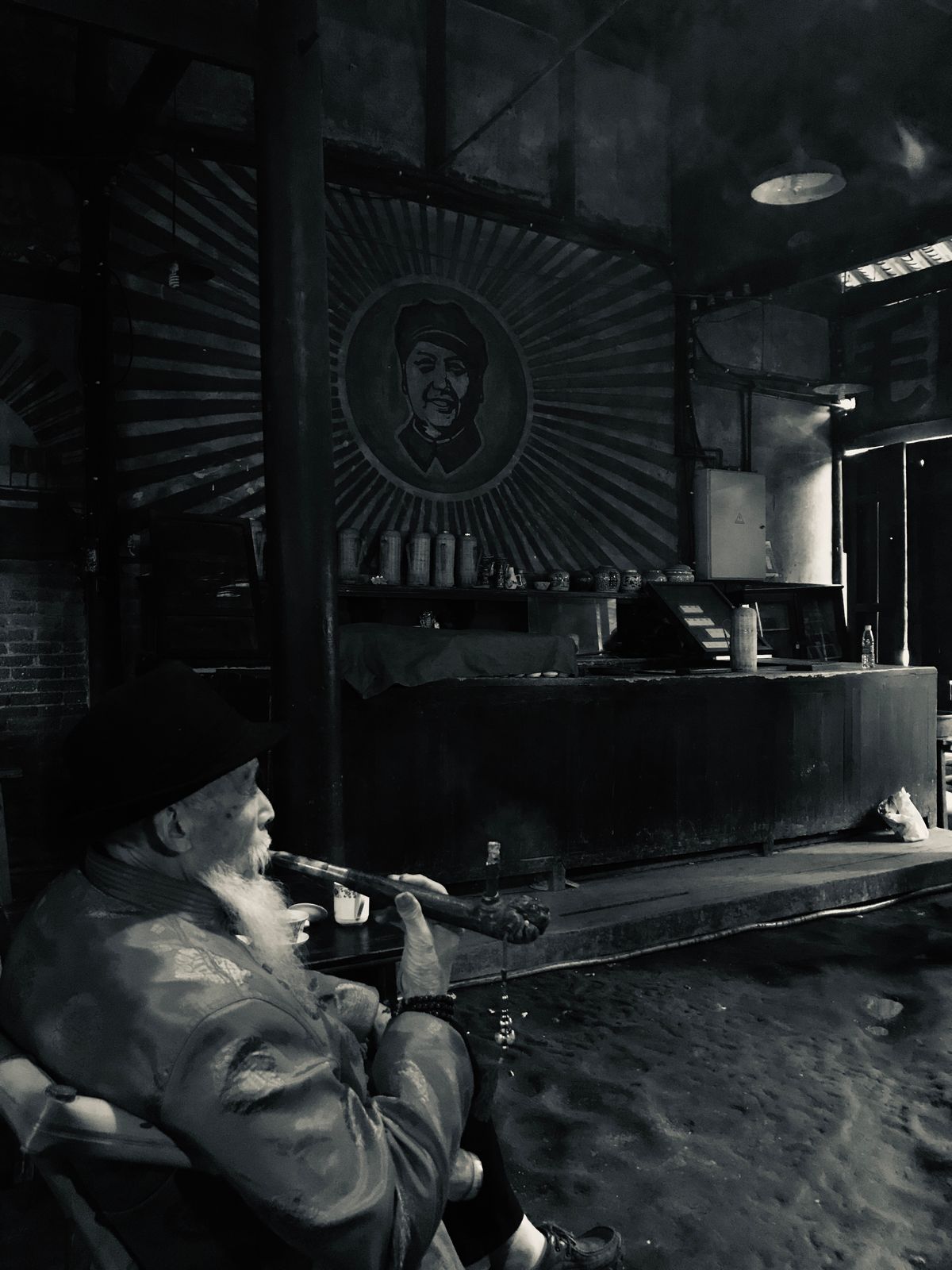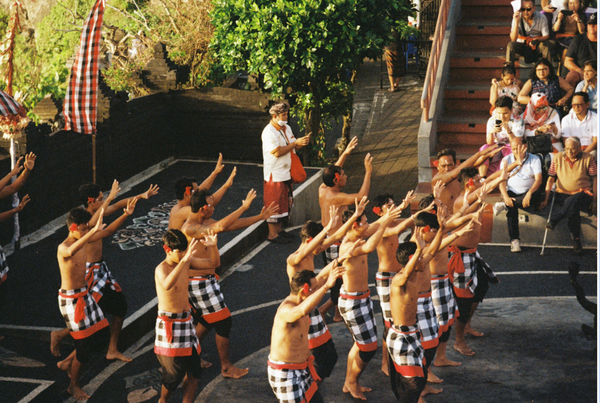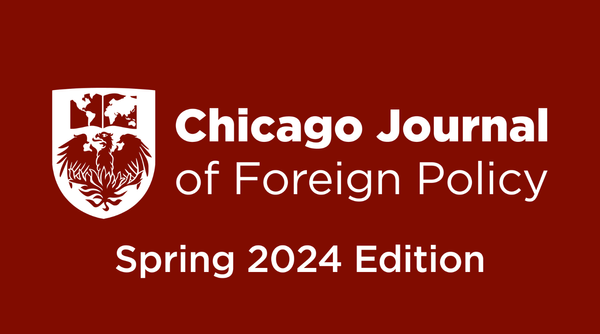China's Collective Memory of the War of Resistance

By CHRISTAL CHENG, University of Toronto ’22
The Second Sino-Japanese War—or “War of Resistance”—refers to the military conflict fought between China and the Japanese Empire during World War II. In spite of the unimaginable scale of human suffering and the ravaging effects of war on the society, the eight years of resistance contributed to the Chinese Communist Party’s (CCP) rise to power.[1] Well aware of the fact that the mass mobilization cultivated during the War was ephemeral, the CCP appealed to nationalism as a means of consolidating its political legitimacy and prolonging its influence. Nationalism is often perceived as a malign political force given its tendency for humans to distinguish themselves from the rest, which creates fragmentations within and outside of the society. A different understanding of nationalism, embodied by Benedict Anderson’s Imagined Communities, romanticizes the nation as an “imagined political community.”[2] According to Anderson, nations are human constructs of social relations that invoke feelings of attachment grounded in a system of shared knowledge. Memories, in particular, have enabled individuals “to think of themselves as living lives parallelto those of other substantial groups of people … proceeding along the same trajectory.”[3] This parallelism and continuity further accentuate Anderson’s conception of the nation as an imagined entity, where the lack of physical acquaintance does not necessarily equate to detachment, but rather reinforces an emotional bond between members who perceive themselves as extensions of the nation’s past. China has endorsed Anderson’s view of memories as quintessential to national unity by designating historical consciousness as a source of national cohesion.
Wartime memories can be deceiving and selective. In the case of China, what is remembered by the public is subjected to manipulation by the state authority. In the immediate aftermath of the War, memories of atrocities were suppressed, neglected due to the prolonged period of human suffering, and abuse.[4] The submerged memories were later recovered in commemoration of those who had been killed in the War, and more importantly, as a means of transcendence capable of standing the test of time. The Politburo has conjured up national solidarity by framing China’s experience during the war as a story of victimization. Throughout the 1970s and 1990s, the central government has instilled a growing sense of collective consciousness through memories of national humiliation by memorializing the victims of the Nanjing Massacre in museums, recreating scenes from the Rape of Nanjing in cinematic productions, and enacting a campaign for patriotic education.
The Rape of Nanjing is one of the darkest periods in the history of China, involving the mass murder and rape of non-combatants by the Japanese Imperial Army.[5] The atrocious experiences of trauma were publicized through waves of state-led commemoration. Public commemorative sites include the Nanjing Massacre Memorial Hall (1985) marking the fortieth anniversary of the end of the War, the Lugouqiao Memorial Hall (1987) opening on the fiftieth anniversary since the start of the War, and the Taierzhuang Memorial (1993) commemorating the fifty-fifth anniversary of the first major Chinese victory.[6] Qi Kang, the Chinese architect of the Nanjing Massacre Memorial Hall, wanted to create an “emotional space”[7] that exposes the visitors to the experiences of trauma at the actual sites where the unspeakable crimes occurred. The museum represented a different kind of aesthetic – the gloomy, bleak, and lifeless appearance was designed to leave visitors with the impression of “entering a tomb.”[8] The gruesome graphics, sculptures of helpless victims, collection of weapons in the holistic structure amounts to China’s victimization at the hands of the Japanese.[9] Overridden by emotions and grief, visitors leave the Memorial Hall commemorating the 300,000 victims who have lost their lives in the Rape of Nanjing. Although Chinese state museums constitute a solemn memorial to the victims of War, they nevertheless serve as important venues for the construction of national identity. It forces the public to contend with the country’s past, and fosters national unity through a sense of shame, and humiliation inflicted upon China as a whole by Japan.
The victimization narrative was amplified by cinematic productions of the Rape of Nanjing. Although China’s film industry is not directly affiliated with the state apparatus, it nonetheless is subjected to the government’s political grip through subsidized production, filming permit, and systematic censorship.[10] The films sought to validate the massacre negated by the Japanese: “After living in the shadow of Japanese denial … the Chinese discourse on the Rape of Nanjing focuses on trying to ‘prove’ that it actually happened.”[11] TheMassacre in Nanjing (1987), Black Sun: The Nanjing Massacre(1995), and Don’t Cry Nanking(1995) instill a sense of reality, and engage the audience through portrayals of violence.[12] The depiction of history through films can be extremely powerful, and effective in removing the viewers’ detachment from the distant past. What distinguishes written works from that of visuals comes down to the level of voluntary imagination: text can be interpreted and reinterpreted in drastic different ways, but visual media are presented from the producer’s historical lenses. In this case, the scenes chosen to be showcased, and the specific viewpoint from which they are exhibited are largely at the disposal of the producer “so as to invoke in the viewer an acute sense of injustice as well as a profound feeling of sympathy.”[13] It is true that films can distort historical records due to its subjective nature, and for that reason, it can also be used to facilitate storytelling. “The rape of women has often been imagined as the symbolic rape of the nation,”[14] which forces the nation to contend with its past, and to restore national honor by demanding retribution for the indignity suffered. The artistic depictions of violence provoke feelings of outrage at the appalling events and evoke a common suffering from the viewers. The recreation of some of the most horrid flashbacks of the massacre heightens feelings of victimization by mentally immersing the audience in the atrocious experiences. The films give a physical form to the character’s emotions, and experiences, in that the viewing of the film induces intense emotions by taking the audience back to the scene of atrocity to grieve alongside the protagonist.
The patriotic education campaign intensified Chinese nationalism against Japan. In 1978, Deng Xiaoping, then vice premier of the CCP and one of the most prominent political figures in China, sought to promote development by expanding and improving the education system. Not only were schools perceived to be foundational building blocks to a child’s social and intellectual development, but the educational system was a vehicle to indoctrinate Party values, and beliefs. Deng prescribed educational institutions to exhibit “firm and correct political orientation,”[15] while fostering “political consciousness” among the students.[16] The Ministry of Education was responsible for constructing a system that nurtures patriotic feelings and national pride. Schools serve an important political use by stimulating a sense of nationhood, further accentuating China’s victimizing narrative through the Patriotic Education Campaign, inaugurated in 1991. The Campaign marked China’s transition from a victor’s successful resistance against the Japanese to a victim’s suppression under foreign imperialist powers.[17] The education system was designed to instill the dominant values endorsed by the CCP in the younger generations and foster a growing sense of shared identity tied to a common past. The institutionalization of national humiliation through education was a form of mass mobilization that transforms individual belief systems, stokes patriotism, and induces anti-Western sentiments by blaming Japan, and Western nations for China’s suffering.[18] Collective memory promoted by the education campaign can transcend across generations, projecting the notion of a shared past, and develop empathy towards one’s co-citizens onto future generations.
Contrary to traditional approaches, China has exemplified the paradox to nation-building: the rising of Chinese nationalism centralized on the victimization narrative of the War of Resistance emboldened rather than weakened China’s resolve abroad. The fervent nationalism of the Chinese people fueled by the resentment of Japan has motivated China to adopt a firm, and assertive foreign policy outlook. One of the main pillars of Chinese nationalism rests on China’s experiences of imperialism since the mid-nineteenth century.[19] State-led narratives of national humiliation have unleashed the overwhelming need to restore national pride to China and to avoid falling prey once again to Western and Japanese imperialism. The inability of China and Japan to reconcile their differences in historical accounts of the Nanjing Massacre, comfort women, official visits to Yasukuni Shrine, and textbook has sowed the seeds of mutual political antagonism.[20] China’s attempt in rebuilding its national identity has instilled a growing sense of enmity with Japan. Furthermore, the narrative of humiliation and victimization has caused China to adopt a relatively Hobbesian view of the international system, which entails the ordering of global affairs by stronger states.[21] The underlying principle amounts to national strength: powerful states get to dictate the terms of the international order, while weaker states can only submit due to the unequal distribution of power. This has strong implications for how China conducts international relations and interacts with major powers. Perceiving the world as a competitive arena, China feels obliged to expand its national prowess in order to protect itself from external threats like occupation, and intervention. In consequence, nationalist sentiments generated under the rhetoric of victimization have nevertheless compelled the Chinese state to be wary of increased foreign dominance and to see the outside world as hostile. This is especially useful in understanding contemporary Sino-American relations. China’s unprecedented economic growth is regarded as a moment of redemption for the Chinese nation. The rise of China as an economic powerhouse and global power has galvanized it to construct a Sinocentric world – one that is favourable to China’s national interests – fortified by economic development and the need to safeguard national sovereignty in a globalized world. It has provided a counterweight to the Washington Consensus, and a viable alternative model of development for developing countries.[22] China’s confrontations with the U.S. in areas of trade, technology, security, and maritime claims best illustrate its increasingly assertive foreign policy. China’s attempt to present itself on equal diplomatic footing with the U.S. is nevertheless part of the greater scheme of restoring itself to a position of power, and prestige.
The rise of Chinese nationalism has emboldened China to engage in more robust foreign relations. There are both internal and external political ramifications for China’s aggressive behaviors. Given China’s immense humiliation in the past, the political legitimacy of the CCP largely rests on their ability to make China strong in the face of perceived foreign threats. Jiang Zemin, then Chairman of the Central Committee, lauded past achievements on the 80thanniversary of the founding of the Communist Party of China’s, “it is precisely the leadership of the Communist Party of China that has enabled the … great historical transformation.”[23] The nation has perceived the CCP as its savior, one that is capable of moving the country away from national humiliation, and towards national pride. However, even though stirring up nationalism may be a source of political legitimacy for the CCP, it may also put China’s political stability to the test and strain its diplomatic relations abroad. As protests gain momentum, it may compel the central government to inaugurate assertive diplomacy, which diminishes the chances of cooperative forms of interaction between states.[24] Evidently, there is the dilemma of brewing or curbing nationalism. Nationalism has enabled China to assume a more vigorous stance on foreign policy, consolidating authority in the hands of the communist party, but has nevertheless impeded international cooperation by constraining the diplomatic conducts of the state. Nationalism is powerful both in its ability to fortify a nation, and to shape the foreign policy choices of the state.
The Second Sino-Japanese War was a major war between China and imperialist Japan. China was especially vulnerable to external occupation: it was politically divided, socially fragmented, and economically disadvantaged. Though China suffered tremendous losses, China’s resistance—fueled by its antipathy to Japan’s growing aggression—led to the ultimate defeat of the Japanese troops. Commemoration of China’s war resistance was not always proportional to the unprecedented devastation. Memories of national humiliation were initially suppressed for fear that the traumatic events would undermine national recovery and state-building. However, China gradually began to realize the strength in shaping its own wartime narrative. China’s official account of the War of Resistance has not only restored its war efforts to the rightful place, but has deepened the call for nationalism by presenting itself as the victim of the war. China went on the offensive and launched campaigns of state-led commemoration of the Second Sino-Japanese War during the late 20thcentury. Evidence of Japanese atrocities have been preserved and publicly displayed in museums, and films were then used to popularize and amplify the emotions of the victims. Through these public displays, the audience is invited to confront the horrors of the Nanjing Massacre. To further mobilize youths unfamiliar with the turmoil and humiliation of China’s past, the patriotic education campaign was instigated. By publicly engaging with China’s collective memory of the war through museums, theatrical exhibitions, and patriotic education, the CCP was able to conjure up nationalist sentiments and establish a link between the past and present. The national narrative of humiliation is a binding force between the citizens and the homeland, which enhances the horizontal social and political affiliation underlying Anderson’s view of the nation as an imagined community. Ironically, China’s attempt to rebrand itself as the victim also allows it to pursue an ambitious foreign policy agenda, designed to prevent the recurrence of humiliation. The prevalent desire to resist foreign dominance in civil society has bolstered China’s image at home and abroad, but nonetheless comes at a price. In reviving nationalist fervor, China risks the inability to control the public’s fuming sentiments, reduces the scope for negotiations, and potentially leads to acrimonious foreign relations. The stroking of nationalism by the CCP is a powerful mechanism that enhances national unity, but an overflow of nationalist sentiments may constrain China’s foreign policy decisions and behaviors.
[1]Diana Lary, The Chinese People at War: Human Suffering and Social Transformation, 1937-1945(New York: Cambridge University Press, 2010), 148-52.
[2]Benedict Anderson, Imagined Communities: Reflections on the Origin and Spread of Nationalism(London: Verso, 2006), 6.
[3]Ibid., 188.
[4]Lary, The Chinese People at War, 205-8.
[5]Xiaohong Xu and Lyn Spillman, “Political Centres, Progressive Narratives and Cultural Trauma: Coming to Terms with the Nanjing Massacre in China, 1937-1979,” in Northeast Asia’s Difficult Past: Essays in Collective Memory, eds. Mikyoung Kim and Barry Schwartz (New York: Palgrave Macmillan, 2010), 101-3.
[6]Lary, The Chinese People at War, 204-5.
[7]Kirk A. Denton, Exhibiting the Past: Historical Memory and the Politics of Museums in Postsocialist China(Honolulu: University of Hawai’I Press, 2014),144.
[8]Ibid.
[9]Ibid., 143-9.
[10]Michael Berry, “Cinematic Representations of the Rape of Nanking,” East Asia19, no. 4 (December 2001): 92, 98, 102.
[11]Ibid., 88.
[12]Ibid., 92-3.
[13]Ibid., 87.
[14]Amanda Weiss, “Contested Images of Rape: The Nanjing Massacre in Chinese and Japanese Films,” Signs: Journal of Women in Culture and Society41, no. 2 (Winter 2016): 437.
[15]Xiaoping Deng, “Speech at the national conference on education, April 22, 1978” in Selected Works of Deng Xiaoping, 1975-1982, trans. The Bureau for the Compilation and Translation of Works of Marx, Engels, Lenin and Stalin Under the Central Committee of the Communist Party of China (Beijing: Foreign Language Press, 1984), 120.
[16]Ibid.
[17]Zheng Wang, “National Humiliation, History Education, and the Politics of Historical Memory: Patriotic Education Campaign in China,” International Studies Quarterly52, no. 4 (December 2008): 784.
[18]Ibid., 789, 792, 798.
[19]Lijun Yang, “A Clash of Nationalisms: Sino-Japanese Relations in the Twenty-First Century,” in China-Japan Relations in the 21stCentury: Antagonisms Despite Interdependency, ed. Lam Peng Er (Singapore: Palgrave Macmillan, 2017), 88-9.
[20]Ibid., 83-5.
[21]Ibid., 224.
[22]Bart Dessein, “Historical narrative, remembrance, and the ordering of the world: a historical assessment of China’s international relations,” in China’s International Role: Challenging or supporting international orders, eds. Sebastian Harnisch, Sebastian Bersick, and Jörn-Carsten Gottwald (New York: Routledge, 2016), 31.
[23]Sebastian Harnisch, “China’s historical self and its international role,” in China’s International Role, 43.
[24]Jessica Chen Weiss, Powerful Patriots: Nationalist Protest in China’s Foreign Relations(New York: Oxford University Press, 2014), 16-7.





